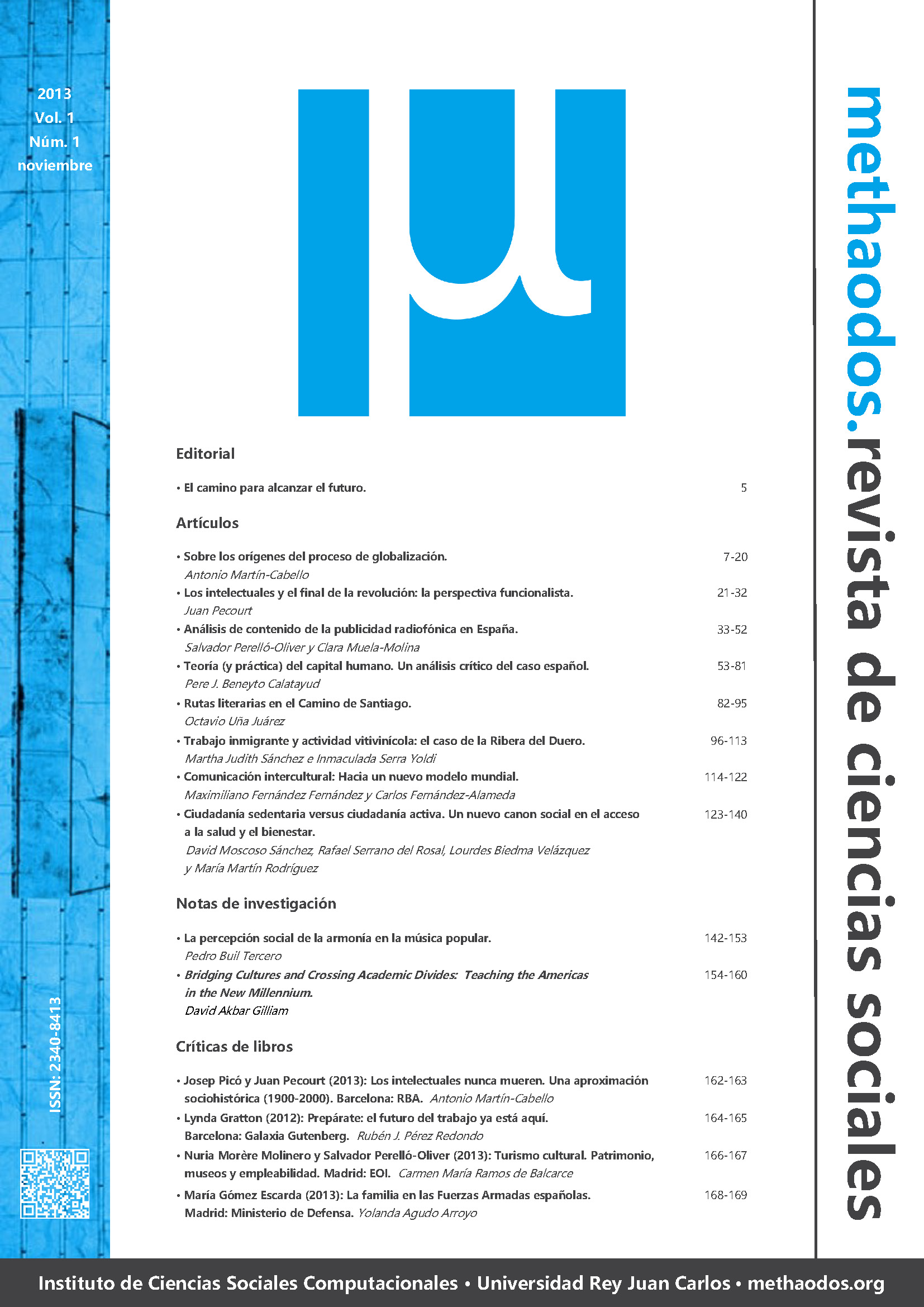Sedentary citizenship versus active citizenship. A new social canon in access to health and welfare.
Main Article Content
Abstract
The article addresses a thorny issue in our time, sedentarism. Concern over sedentarism pervades current medical discourse as well as public opinion. However, this article does not enter into debate or discuss solutions. Instead, it offers a different perspective on an issue that has been largely defined by the medical profession. Physical activity and sports are a source of health; biological and epidemiological studies have demonstrated this. But health is not merely the absence of disease or the biophysical state of the individual. Culture and living conditions contribute to it. Well-being is also a reflection of elements of a social and not just biological nature. Thus, the study of health and well-being must not ignore the value of the social sciences. Here we analyze the extent to which our lifestyles (active or sedentary) are determinants of our health and subjective well-being. The results provide a reflection on the cost of our lifestyles, not only in regard to our own health and well-being, but also regarding the health system itself. Hence, our diagnosis is based on the idea that, as with health and well-being, our lifestyles depend on cultural prescriptions and not merely medical ones.
Downloads
Article Details
References
Aday, L. A., y Andersen, R. (1981): “Equity of access to medial care: A conceptual and empirical overview”, Medical Care, 19: 4-27.
Azpiazu, M., Cruz, A. J.; Villagrasa, J. R., Abanades, J. C.; García, N. y Valero, A. (2002): “Factores asociados al mal estado de salud percibido o mala calidad de vida en personas mayores de 65 años”, Revista Española de Salud Pública, 76 (6): 683-700. http://dx.doi.org/10.1590/S1135-57272002000600005
Cagigal, J. M. (1981): ¡Oh Deporte! Anatomía de un gigante. Valladolid: Miñón.
Entrala, A., Iglesias, C. y De Jesús, F. (2003): “Fisiopatología de la obesidad”, Nutrición clínica y dietética hospitalaria, 23 (5): 18-24.
Esteve, M. y Roca, J. (1997): “Calidad de vida relacionada con la salud: un nuevo parámetro a tener en cuenta”, Medicina Clínica, 108: 458-459.
Fernández-Ballesteros, R. (1997): “Quality of life: concept and assessment”, en Adair, J., Belanger, D. y Dion, K. eds.: Advances in Psychological Science. Vol. I: Social, personal and cultural aspects. Montreal: Psychological Press.
Ferraro, K. F. y Farmer, M. M. (1999): “Utility of health data from social surveys: Is there a gold Standard for measuring morbidity?”, American Sociological Review, 64: 303-315.
Gonzalo, E. y Pasarín, M., I. (2004): “La salud de las personas mayores”, Gaceta Sanitaria, 18: 69-80.
Hernando, G. y Martínez de Quel, O. (2006): La valoración del bienestar en la prescripción de programas de actividad físico-deportivas. (Documento inédito).
Idler, E. L. y Benyamini, Y. (1997): “Self-rated health and mortality: a review of twenty-seven community studies”, Journal of Health and Social Behaviour, 38: 21-37.
Lawton, M. P. (1985): “Competence, environmental press, and the adaptation of older people”, en Lawton, M.P., Windley, P. G. y Byerts, T. O. eds: Aging and the environment: 33-59. Nueva York: Springer.
Martínez del Castillo, J., Vázquez, B., Graupera, J. L., Jiménez-Beatty, J. E., Alfaro, É., Hernández, M. y Avelino, D. (2005): Estudio sobre la actividad física y deportiva de las mujeres del municipio de Madrid: hábitos, demandas y barreras. Madrid: Ayuntamiento de Madrid, Área de Gobierno de Empleo y Servicios a la Ciudadanía.
Martínez del Castillo, J., Jiménez-Beatty, J. E., Graupera J. L. y Rodríguez, M. L. (2006): “Condiciones de vida, socialización y actividad física en la vejez”, Revista Internacional de Sociología, 44: 39-62.
Moos, R. H. y Lemke, S. (1996): Evaluation residential facilities. Bradbury: SAGE.
OMS (2007): Informe sobre la salud en el mundo 2007. [01-01-2011]. Disponible en web: http://www.who.int/whr/2007/07_report_es.pdf
Rhodes, R. E., Martin, A. D., Taunton, J. E., Rhodes, E. C., Donnelly, M y Elliot, J. (1999): “Factors associated with exercise adherence among older adults: an individual perspective”, Sports Medicine, 28 (6): 397-411. http://dx.doi.org/10.2165/00007256-199928060-00003
Ruiz, M. J., Román, M., Martín, G., Alférez, M. J. y Prieto, D. (2003): “Calidad de vida relacionada con la salud en las diferentes terapias sustitutivas de la insuficiencia renal crónica”, Revista Sociedad Española Enfermedades Nefrológicas, 6 (4): 222-232.
Schwartzmann, L. (2003): “Calidad de vida relacionada con la salud: aspectos conceptuales”, Ciencia Enfermería, 9 (2): 9-21. http://dx.doi.org/10.4067/S0717-95532003000200002
United States Department of Health and Human Services (1996): Physical activity and health: a report of the Surgeon General. Atlanta, G.A., U.S: Department of Health and Human Services, Centers for Disease Control and Prevention, National Center for Disease Chronic Disease Prevention and Health Promotion.

